100 km away from Luoyang, on a formerly peaceful hill, the martial arts master Shaolin monks meditate. The kungfu, traditional Chinese martial art, the Shaolin monks show it on innumerable stages all over the world. This mediatization is strangely the total opposition of the serenity and inner peace the meditation brings. The monks brings themselves up to date, some of them relax between 2 meditation sessions giving a phone call from a GSM.
At the park entrance, speakers broadcast a rythmical music. Young fighters line up on the square and begin a martial choregraphy. The tone is given.



The Shaolin temple is located at 1 km from the entrance. Above a low wall or through a half-open door, Don't expect to eavesdrop on an old master meditating or training. The temple is from now on similar to a museum, A sign of the past.


RTW-China
Tuesday 7 August 2007
Inside the Shaolin monks' den
By dorian on Tuesday 7 August 2007, 23:18
Monday 6 August 2007
The Buddhist grottoes of Longmen
By dorian on Monday 6 August 2007, 22:46
Luoyang, 5 hours by bus south from Xi'an. The terminus of the number 81 local bus is located at the park entrance of the grottoes of Longmen. On the Unesco world heritage list, the cliffs of the east and west river banks were hollowed out and ornated with Buddhist motifs. The granite gruyère cheese was carved by the faithfuls. The rock clusters niches which formerly sheltered Buddha's representations. Because most of the statues are missing or eroded by the time devastation. Without viing with the splendid northern grottoes of Yungang, the relaxing stroll is flanked by the river on a side and by the cliff on the other one. The giant Buddha surrounded by stone warriors is the main attraction on the east bank.
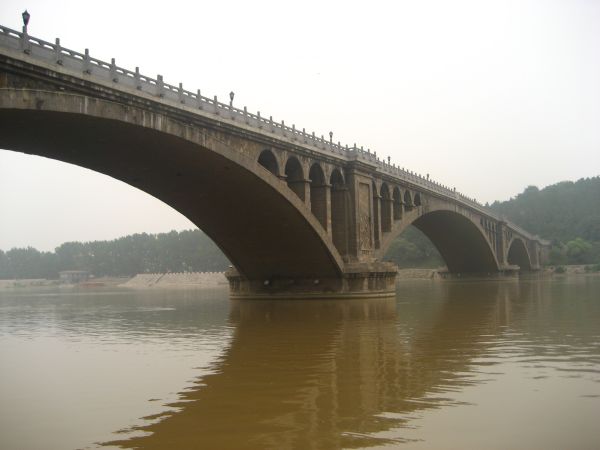

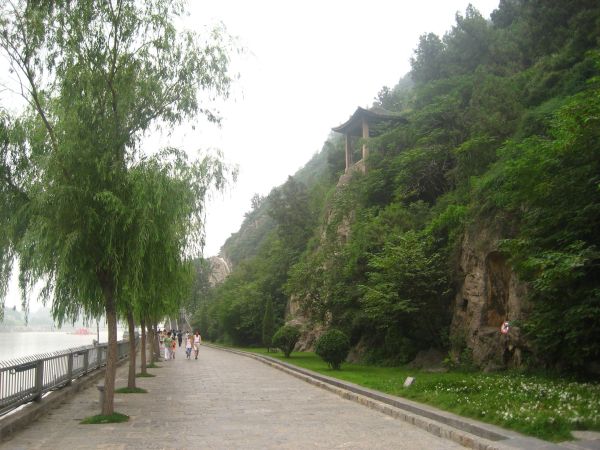
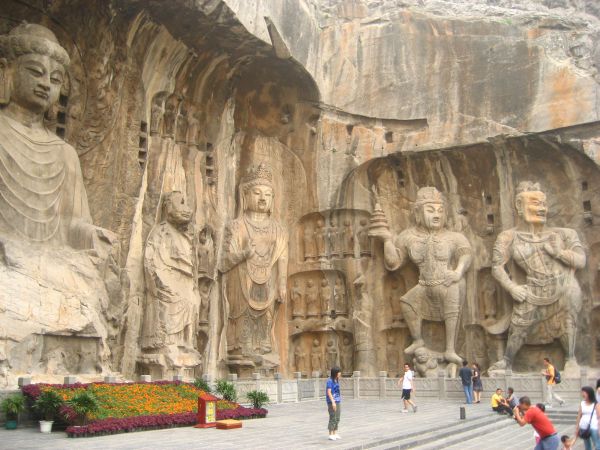
At the end of the cliff, a bridge strides over the river and the walk carries on the opposite bank. A temple without any tourists offers a great point of view on the cut cliff that looks out over us a few minutes before.
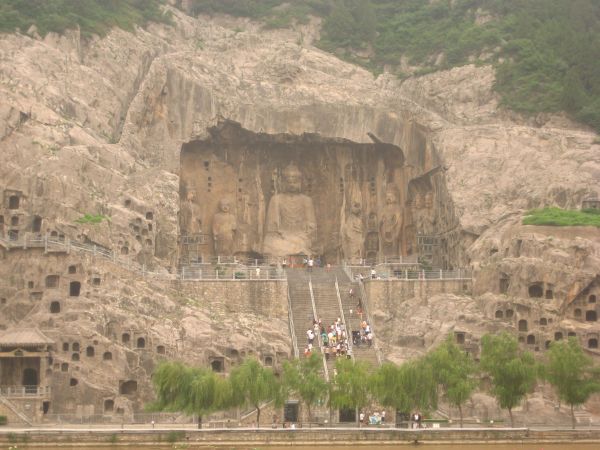

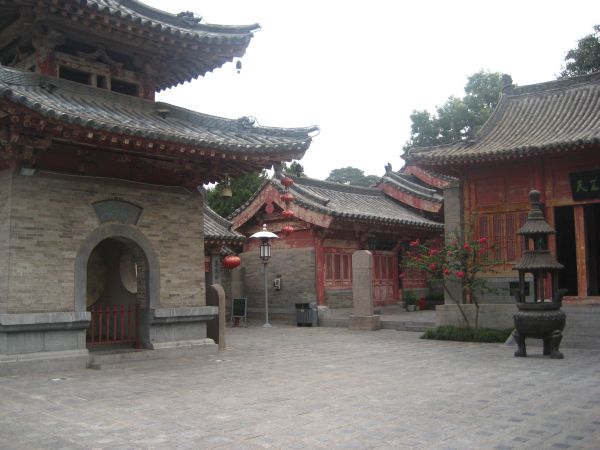
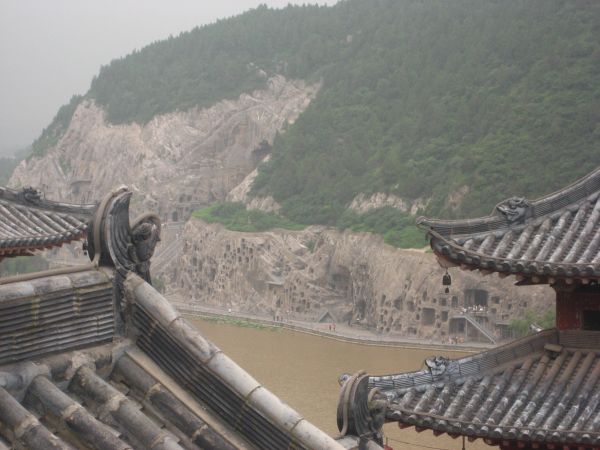
A second bridge takes us to the park entrance while a veil of darkness concludes the immovable spectacle of the grottoes of the dragon gate.
Sunday 5 August 2007
The 5 sacred peaks of the Huashan mountain
By dorian on Sunday 5 August 2007, 22:43
Without being as popular as the Buddhism, the Taoism keeps a strong influence in the Chinese traditions. Some people credit it to be the only "made in China" religion, the other ones were imported. The Tao concept is the epicenter of the religion and describes how each person must set up his life to keep in harmony with the order of the universe.
The Taoism has its sacred mountains as well and Huashan is one of them. 2 hours by bus from Xi'an, the Huashan small village is the starting point to explore the mountain. Shuttles continuously commute from the village to the access area of the north peak. A cable car prevents us from walking the strenuous ascension.





Easily recognizable with their caps, Chinese tourists outnumber the pilgrims. The group of red caps follows the one of yellow caps. The cable car drops us off by the north peak and we start the unending ups and downs from a peak to the next one, west peak, south peak, east peak and center peak. Without experiencing it as a pilgrimage, the different ascensions need some moral qualities to end the loop and not eluding a peak. An about 5-hour exhausting lap in the middle of white and smooth rock, breathtaking cliffs, lumps of forests nested in the stony chinks, floating temples above an ocean of clouds. Hours of emotions running alonside the summits of the sacred mountain.





The crowd massed at the entrance of the cable car drives us to put in a last effort going down on foot. Inside the gorges, the scenery is marvellous while le last steps are really painful for our legs.
« previous entries - page 4 of 7 - next entries »



